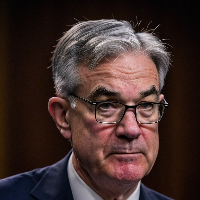Key Details of the Rate Cut
1) Rate Reduction: The Fed lowered the federal funds rate by 50 basis points (0.5%), bringing it to a range of 4.75% to 5%. This decision comes as inflation has eased, with current rates around 2.5%, down from a peak of 9.1% in June 2022.
2) Historical Context: This is the first rate cut in over four years, following a series of 11 rate hikes that began in March 2022. The Fed aims to balance inflation control with maintaining employment stability, as job gains have slowed and unemployment has slightly increased to around 4.2%.
3) Future Projections: The Federal Open Market Committee (FOMC) indicated potential for further cuts, projecting an additional 50 basis points reduction by the end of 2024 and a total decrease of 1 percentage point by the end of 2025.
Economic Implications
Benefits
For Businesses:
1) Lower Borrowing Costs: Businesses can benefit from reduced costs for loans, making it easier to finance expansion, purchase equipment, and invest in growth.
2) Increased Consumer Spending: As borrowing costs decrease, consumer spending may rise, leading to higher sales and profits for businesses.
3) Access to Capital: Small businesses and startups may find it easier to secure funding in a lower interest rate environment.
For Financial Markets:
1) Boost in Stock Prices: Lower interest rates often stimulate stock market activity as investors seek higher returns in equities.
2) Demand for Bonds: With yields on new bonds becoming more attractive (due to the prediction of further cuts in upcoming months) , there may be increased demand for fixed-income investments.
3) Reduced Recession Risk: A lower interest rate can help mitigate recession fears by encouraging economic activity.
For Consumers:
1) Lower Loan Costs: Consumers will benefit from reduced interest rates on mortgages, auto loans, and credit cards, making borrowing more affordable.
2) Refinancing Opportunities: Homeowners may take advantage of lower rates to refinance (replacing old loans with new loans, typically to obtain the benefit of lower interest rates) existing mortgages at better terms.
3) Job Opportunities: As businesses expand due to lower costs, job creation may increase, benefiting consumers seeking employment.
Cons
For Businesses:
1) Inflation Concerns: There are worries about rising inflation and the possibility that the Fed may need to raise rates again if inflation accelerates.
2) Economic Overheating Risks: An influx of capital could lead to asset bubbles if not managed properly.
3) Labor Market Pressures: A tighter job market could lead to increased competition for skilled workers.
For Financial Markets:
1) Increased Volatility: Financial markets may experience volatility as investors react to changing economic conditions and Fed policy adjustments.
2) Lower Savings Returns: Consumers may see reduced yields on savings accounts and fixed-income investments as rates drop.
3) Risk of Over-Cutting Rates: If the Fed misjudges economic conditions, it could lead to unsustainable growth or future rate hikes.
For Consumers:
1) Diminished Savings Returns: While borrowing costs decrease, consumers may see lower returns on savings accounts and certificates of deposit (CDs).
2) Inflation Erosion: Potential increases in inflation could erode purchasing power over time.
3) Economic Uncertainty: Consumers may feel uncertain about long-term economic stability amid fluctuating rates.
Conclusion
The recent interest rate cut by the Federal Reserve represents a pivotal moment in U.S. monetary policy. While it offers significant benefits for businesses, financial markets, and consumers—such as lower borrowing costs and potential economic growth—it also carries risks that could impact economic stability. As stakeholders adjust to these changes, the full implications will unfold over time, influenced by future rate decisions and broader economic trends. Understanding these dynamics is crucial for navigating the evolving landscape ahead.

